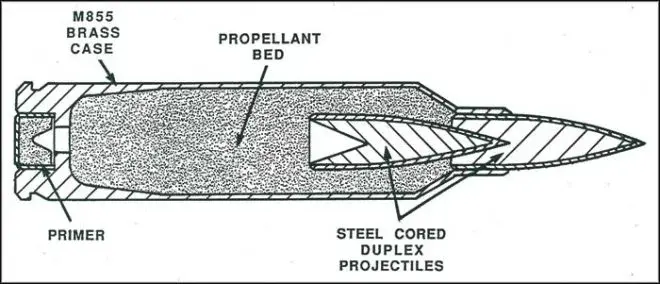During the 1950s, the US Army ran a series of programs trying to find a better solution for infantry rifles than firing single semiauto bullets. These projects (including SALVO, SALVO II, and SPIW) would include experiments with multiple barreled rifles, burst firing rifles, flechette firing weapons, and multiplex cartridges. That is, single cartridge cases with two or three bullets stacked inside. The idea was that a soldier would have a single sight picture, trigger press, and recoil impulse – but would have multiple chances to hit the target.
https://www.forgottenweapons.com/duplex-22-06-m1-garand-at-ria/
Thought this was non credible defense for a minute
Crazy!
Oddly it’s similar to current military bullets in that they split up a bit on impact
I wonder how much the rear bullet deformed when it got fired into the front bullet, or if that was even an issue.
It’s a lot easier to get pictures of 5.56mm duplex than .22-06, but this gives kind of the idea. The bullet projectiles have cutouts in the rear and the second bullet is snugged up into the first, with them firing as one object when leaving the barrel.

Oh, that makes sense. Thanks for the picture.
That’s an interesting question. I’d assume very little because it seems (I may be wrong) to be glued to the bullet in front of it. Making it less of a collision and more of a push.
I say this because the rear bullet has nothing suspending it in air if it’s not attached to the other bullet some way. Unless it’s held in place by just the powder.
Good ol’ gangbang.





